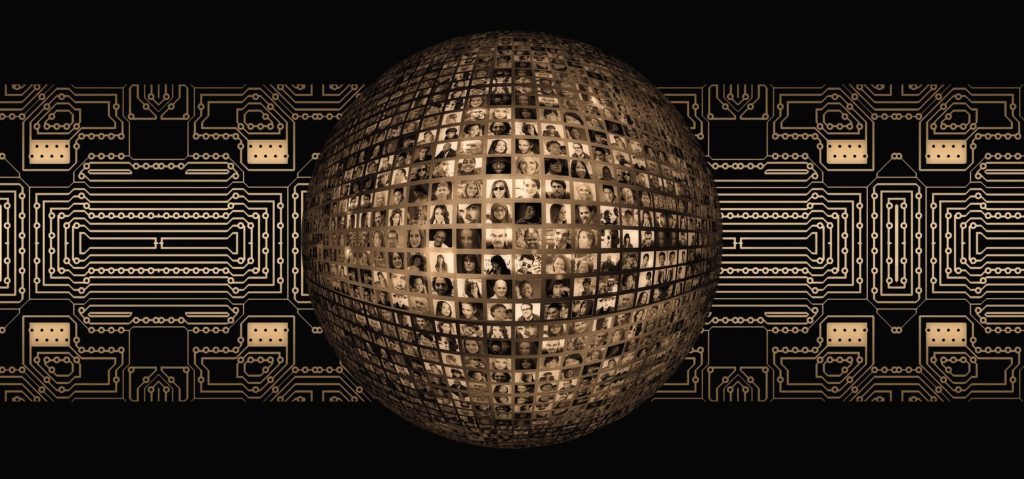Most of us do no better than flipping a coin when it comes to lie detection, no matter how sophisticated we think we are. Unfortunately, this includes the professionals whom we have entrusted to separate the guilty from the innocent, the victims from the perpetrators. Police and probation officers, judges, interrogators, detectives and negotiators all are as unimpressive as lay people when it comes to deception detection (Vrij & Semin, 1996, Vrij 2008). More than 50 years of scientific research tells us that it does not matter if one is living in Buenos Aires, Singapore, Paris, Moscow or New York, peoples’ ability to detect deception is just slightly over 50% (Bond & DePaulo, 2006).
There are a number of reasons for this apparent impairment, some of which are hard wired into our minds, others we can remedy.
From an evolutionary perspective, deception makes sense and the perpetual arms race between deceivers and the deceived is still in full swing. Let us take the diverging interests of men and women as an example. A man’s evolutionary objective is to mate with as many fertile women as possible to ensure the proliferation of his genes; a woman’s evolutionary objective is to mate with a man that can provide resources and protection long enough for her children to survive. This means that both genders had to develop dual strategies to deflect the others’ prime objective whilst ensuring their own objective’s success.
Another contributor to our poor performance is that most humans are inclined to believe in honesty since it was in our species’ evolutionary interest and advantage to do so. Social scientists call this the truth bias. No society would be able to function without the fundamental belief that what someone is telling you is in fact true (think commerce). The truth bias becomes especially pronounced in intimate and prolonged relationships. Contrary to what most people believe, the longer you know someone the more likely you are to fall victim to the truth bias and the less likely you are to detect deceit.
However, the key to understanding why we are such poor lie detectors is found in the fact that most people simply look for the wrong cues.
Non-verbal behaviours, such as various body movements, gestures and facial expressions, are taken as signals equivalent to Pinocchio’s nose, whilst empirical evidence points out that reliable non-verbal deception cues do not exist (DePaulo et al., 2003). The cue that always occurs when someone is lying but never at any other occasion has yet to be discovered.
To make matters worse, it is often assumed that these non-verbal cues increase when someone is lying when in reality the opposite takes place.
A research team comprised of 90 scientists investigating in 75 countries (GDRT, 2006) found that belief in stereotypical but inaccurate deception cues is nearly universal. The most prominent feature associated with deception is the eye gaze aversion. While science is unambiguous and stresses that gaze aversion is unrelated to deception (DePaulo et al., 2003), a whopping 70% of the population thinks that someone who cannot look you in the eye is probably lying (GDRT, 2006). This is especially confounding if we take into consideration how widely this belief is accepted. Since liars know that eye gaze aversion is taken as a sign of deception, logically, they tend to hold their gaze, sometimes even to the degree of staring. In addition, liars must constantly monitor the faces of their targets for signs of suspicion, so that they can adapt their behaviour and deceptive strategy depending on the target’s reaction.
Eye gaze aversion is only the most prominent on a long list of non-verbal cues that are erroneously associated with deception. The belief in a stereotypical liar is based on the assumption that liars must experience emotions, such as fear, guilt and shame, which cause them to display cognitive difficulties such as speech latency, verbal disfluencies and the display of the various body movements that are associated with nervousness. While some liars indeed experience these emotions and display all or some of the related behaviours, as do many people who tell the truth, more experienced or emotionally disconnected liars may not show any of them.
The widespread belief in stereotypical deception cues would be less mystifying if people would have established the validity of those beliefs from observations stemming from their own deceptive behaviour. Since empirical evidence points out that most of these cues occur as often as when telling the truth as when lying, it is puzzling that people believe liars to behave in stereotypical ways while not behaving in that way themselves when being less than truthful.
Are there any reliable non-verbal indicators of deception?
The short answer is no; no matter how many books claim the contrary, Pinocchio’s nose does not exist (Vrij, 2006). The scientific evidence is overwhelming, there are no individual verbal or non-verbal cues that always occur when someone is lying but never when speaking the truth, cues that all liars display independent of context, stakes, social environment, what the lies are about or the strength and type of the liar’s motivation.
This said, we humans communicate, as other primates do, via multiple channels such as the face, body, voice, verbal style and verbal content, and most communication is not related to deception. However, if several valid deception cues occur in temporal alignment as clusters in two or more of our communication channels, then depending on their density these clusters can indeed be indicative of deception (Vrij et al,. 2000).
Some non-verbal communication signals are linked to emotions, especially Micro Expressions (Weiss & Ekman, 2009). These are fleeting facial movements of specific muscle combinations lasting only a fraction of a second; they occur largely without conscious awareness and most of them are very hard to control or imitate by volition. Micro Expressions can help the trained observer to determine the level of congruence between what is said and what is felt. If incongruences between the verbal statement and the true emotions are observed as part of a cluster spanning multiple communication channels then Micro Expressions can deduct another fraction of credence from a statement in the context of a credibility analysis.
In recent years, science has increased its focus on linguistic deception markers. Thanks to advances in fMRI technologies, we know today that certain words are processed in a different part of the brain and completely evade the speakers’ and listeners’ awareness. These elusive words hold great promise when it comes to deception detection and law enforcement agencies around the world have taken notice — but that is a story for another day.
Meanwhile, if you want to find out if you look for the correct deception cues, feel free to test your skills in our quiz below.
References:
Bond Jr, C.F. and DePaulo, B.M., 2006. Accuracy of deception judgments. Personality and social psychology Review, 10(3), pp. 214-234.
DePaulo, B.M., Lindsay, J.J., Malone, B.E., Muhlenbruck, L., Charlton, K. and Cooper, H., 2003. Cues to deception. Psychological bulletin, 129(1), p.74.
GDRT, 2006. A world of lies. Journal of cross-cultural psychology, 37(1), pp.60-74.
Vrij, A., 2006. Nonverbal Communication and Deception.
Vrij, A., 2008. Nonverbal dominance versus verbal accuracy in lie detection: A plea to change police practice. Criminal Justice and Behavior, 35(10), pp.1323-1336.
Vrij, A., Edward, K., Roberts, K.P. and Bull, R., 2000. Detecting deceit via analysis of verbal and nonverbal behavior. Journal of Nonverbal behavior, 24(4), pp.239-263.
Vrij, A. and Semin, G.R., 1996. Lie experts’ beliefs about nonverbal indicators of deception. Journal of nonverbal behavior, 20(1), pp.65-80.
Weiss, J., 2011. Ekman, P.(2009) Telling Lies: Clues to Deceit in the Marketplace, Politics, and Marriage. New York: Norton.







